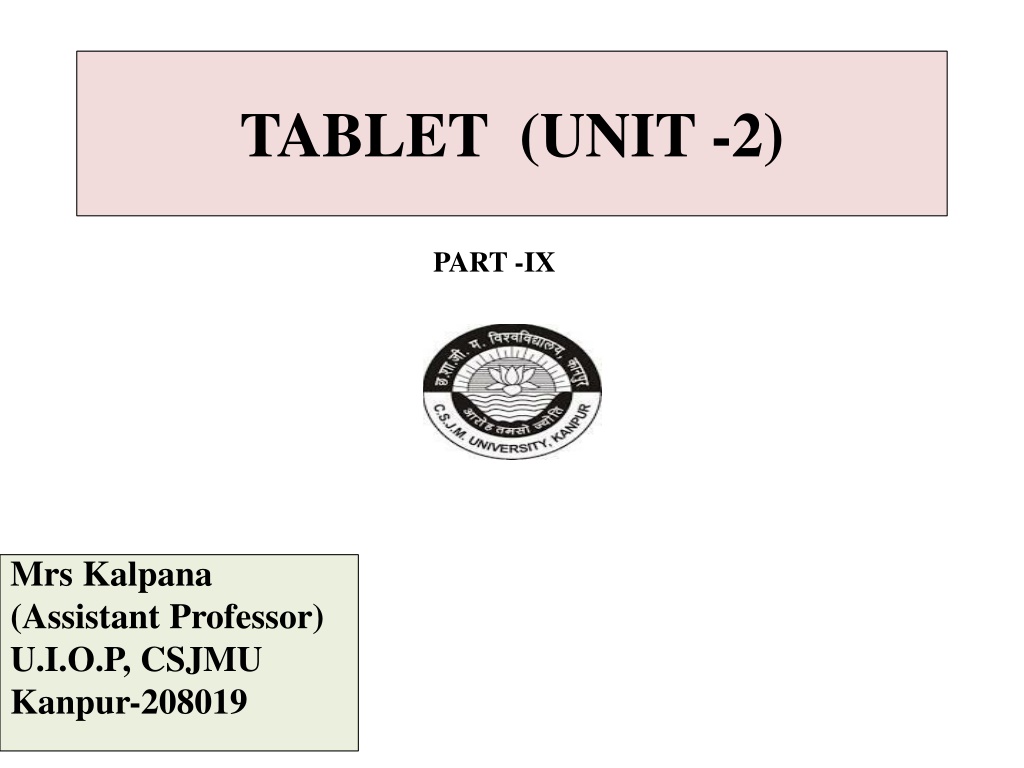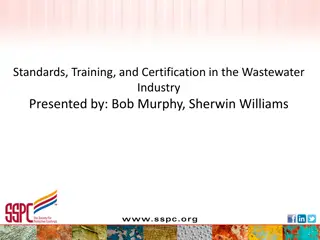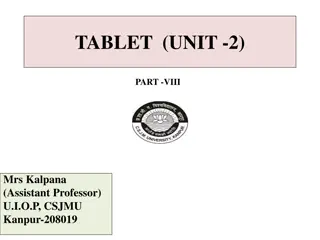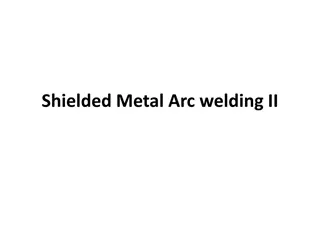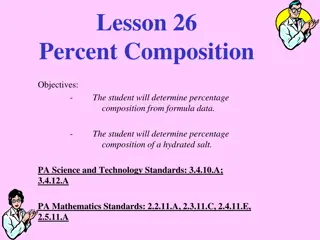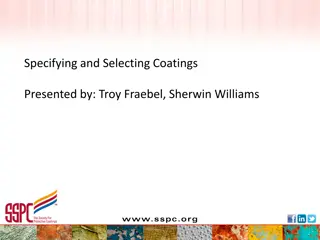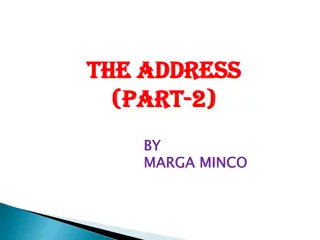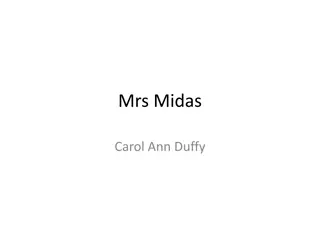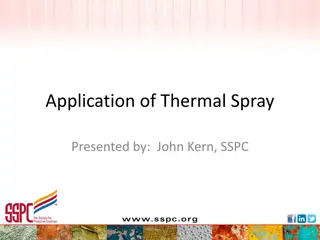Understanding Coating Composition for Tablets: A Guide by Mrs. Kalpana, Assistant Professor
Mrs. Kalpana, an Assistant Professor at U.I.O.P., CSJMU, Kanpur, delves into the components of tablet coating composition including solvents, plasticizers, colorants, and opaquant-extenders. Solvents are crucial for dissolving polymers, while plasticizers modify film quality. Colorants add elegance to dosage forms, and opaquant-extenders enhance coverage and color variety. Explore the ideal properties and examples of each component in this insightful guide.
Download Presentation

Please find below an Image/Link to download the presentation.
The content on the website is provided AS IS for your information and personal use only. It may not be sold, licensed, or shared on other websites without obtaining consent from the author. Download presentation by click this link. If you encounter any issues during the download, it is possible that the publisher has removed the file from their server.
E N D
Presentation Transcript
TABLET (UNIT -2) PART -IX Mrs Kalpana (Assistant Professor) U.I.O.P, CSJMU Kanpur-208019
Coating Composition Composition involves: Solvent Plasticizers Colorants Opaquant-extenders
SOLVENT It is to dissolve or disperse the polymers and other additives and convey them to the substrate surface. The ideal requirements of the solvent are It should either dissolve or disperse the polymer system. It should have no environmental impact. It should easily disperse other coating solution components in to the solvent system. It should have rapid drying rate. It should be :Colorless, tasteless, odorless, Inexpensive, nontoxic, inert , non inflammable and rapid drying Rate. Examples- Water, Ethanol, Methanol, Isopropanol, Chloroform, Acetone, Methylene chloride , Methylene ethyl ketone
PLASTICIZERS It is used to modify the quality of the film . Plasticizing techniques involve internal plasticizers and external plasticizers. Internal plasticizers:involves Chemical modification of the basic polymer that alters the physical properties of the polymers. External plasticizers Additives of the Coating solution to achieve the desire effect of the film (flexibility ,tensile Strength, adhesive properties) Level of plasticizers ranges from 1-50% by weight of film former. Examples :Castor oil, Propylene glycol, Glycerin, Surfactants
COLORANTS It is to provide the distinct color and Elegance to the dosage form. To achieve the proper distribution of suspended colorants in the coating solutions requires: Use of fine powdered colorants (<10 microns) The concentration of colorants in the coating solution depends on the color shade, desired the type of dye and the concentration of the opaquqnt extenders. For very light shade: conc. Limit 0.01% For dark shade: Conc. -2.0% is required. \ The most common colorants in use are certified by FOOD DRUG AND COSMETICS (FD&C) or DRUG AND COSMETIC (D&C) Colorants.
The inorganic materials and the natural colorants are- Iron oxides,,Caramel, Carotenoid, Chlorophyll, indigo, Flavones, Turmeric and carminic acid. A variety of products that are Commercially available are- Opalux- Opaquant color concentrate for sugar coating. Opaspray -for film coating. Opadry- complete film coating concentrate
OPAQUANT-EXTENDERS These are very fine inorganic powders used In the coating solution formulation to provide more pastel colors and increase film coverage. Provide white coating or mask the color of the tablet core. Examples:Titaniundioxide Aluminiumsilicate) Carbonates carbonate, Sulphates like calcium sulphate. Silicates like like-magnesium (Talc,
FILM DEFECTS 1.Picking and Sticking: Attaching of tablet to another. Reasons: Overwetting Rapid Drying Tackiness of tablets Remedy: Reduce liquid application Control rate of drying Change formulations 2.Roughness: Formation of rough and gritty surface. Increase in pathlength of spray nozzle to the bed Rapid Drying Remedy: Decrease in pathlength , Control of drying Rate
Orange peel effect: Inadequate spreading of coating solution Reason: Rapid Drying, High viscosity of coating solution Remedy: Decrease in drying rate, Decrease the viscosity by adding solvent. Bridging: Shrinking or pulling away of film from corners. Reasons: Overwetting, Less viscosity liquids, Spreadility Remedy: Decrease the application rate, Increase viscosity, Change the formulation. Blistering: Removal of film due to rapid evaporation of solvent from tablet core Reasons: Rapid evaporation of solvent due to increase in temprature, High viscosity of coating solution. Remedy: Decrease the temprature of drying, Dilute the coating solution
References: The theory and practice of industrial pharmacy by Leon Lachman,A.lieberman Science and practice of pharmacy by Remington, Volume I
